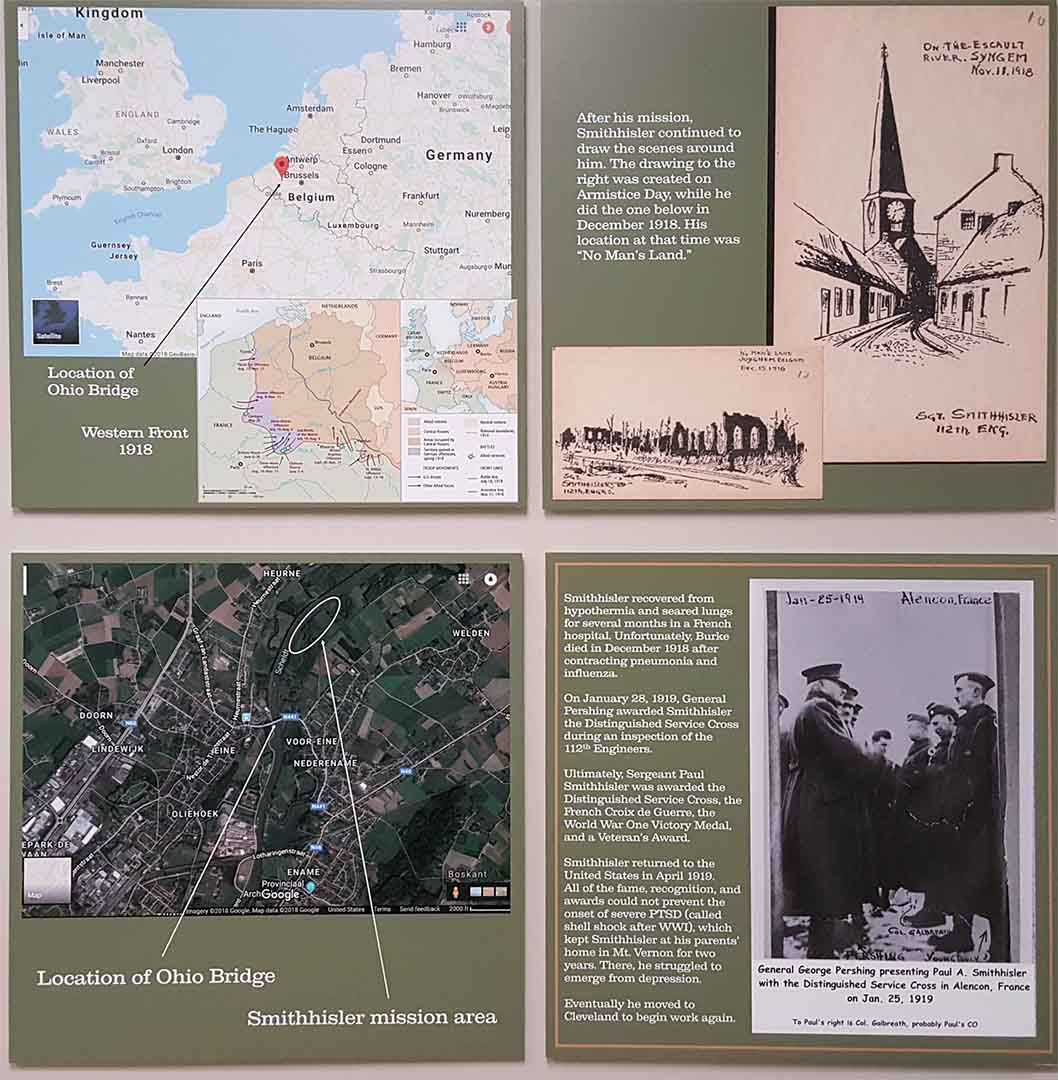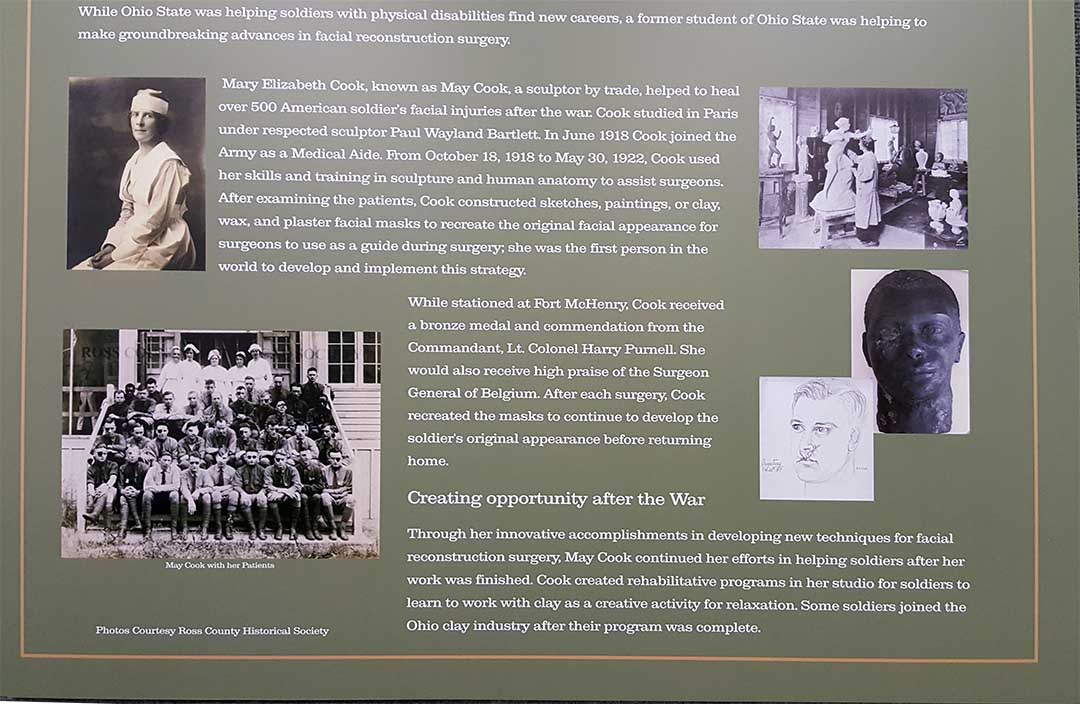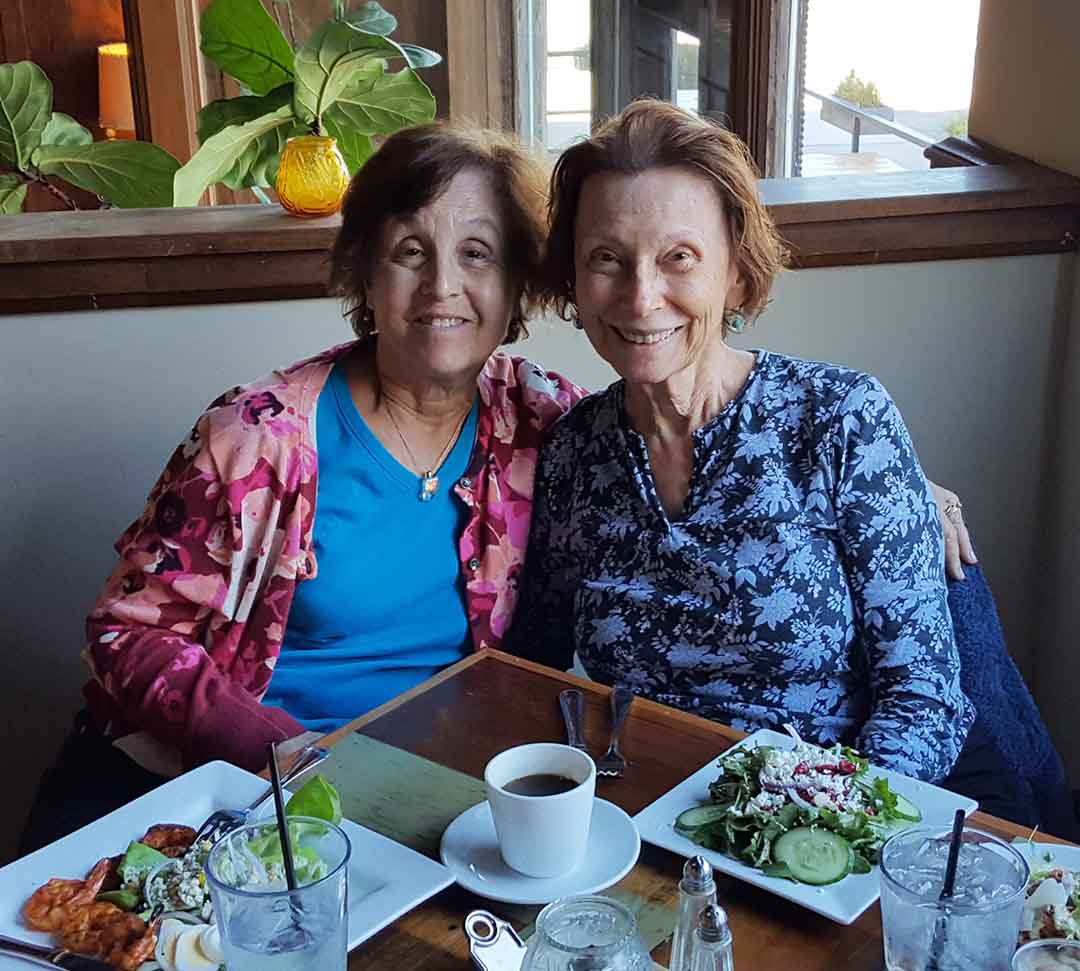My friend Arlene Armstrong* invited me to join her at the Columbus Historical Society to see their WWI exhibit. (WWI is World War I and November 11th 2018 is the 100th anniversary of the end of WWI). My only known connection to that war is my maternal grandfather, Albert Lawrence Specter, who according to family legend was the fastest teletype operator in the Navy. He served in New York City, where he met and married my grandmother.
Not all soldiers were so fortunate to stay in the US and two Ohio artists found themselves in Belgium where they made significant contributions: one which resulted in an early end to the war; the other, to the lives of injured soldiers after the war.
The sketch at the top of this page was drawn by Sgt. Paul Smithhisler, an Ohio artist who worked in an architect’s office before the war. Smithhisler used the burnt ends of matches to draw charcoal sketches that he sent home in letters. In late October of 1918, Smithhisler volunteered to swim across the Scheldt River in Belgium at night (see picture lower left). Before daylight, he made 30 sketches (again using matches dipped in water) of the precise location of artillery positions and machine gun nests along a section of the “impenetrable” Hindenburg Line. Those sketches were used to direct the destruction of a section of the line in early November, allowing 40,000 troops to advance, forcing Germany’s withdrawal and surrender only days later.
A former Ohio State student, Mary Elizabeth “May” Cook, was a sculptor prior to joining the Army as a Medical Aide in mid-1918 (see middle picture below.) Cook used her training to make sketches and plaster casts to recreate the facial appearance of soldiers wounded in the war. She was instrumental in the development of new techniques for facial reconstruction and even created rehabilitation programs in her studio for soldiers.
I had not been aware of the Columbus Historical Society until my visit this week. Click this link for directions and hours. I find their current exhibit which is centered on Columbus and Central Ohio involvement in WWI very well done (except for the music, which they will turn down if you ask) and recommend it highly.
Please Note: I am aware the photos below do not enlarge when you click on them. I’m working on resolving that. Click the links to websites with more information.
- See photo lower right; lunch at Strongwater after viewing my studio




